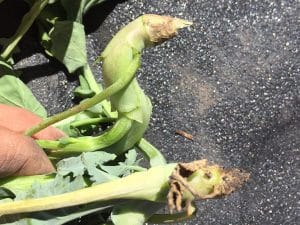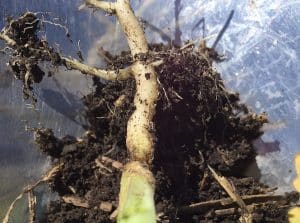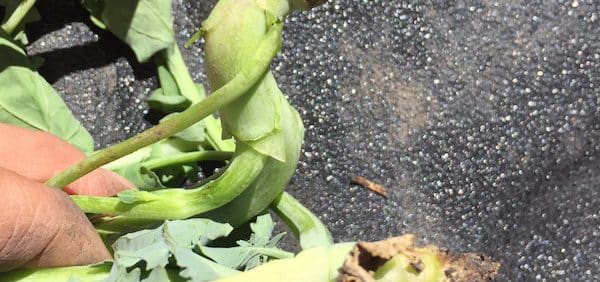Rhizoctonia infection at the bolting and flowering stages of the season can cause roots to pinch off at the crown — which is right around ground level. Roots will also show some browning around and below the girdling. This “browning” and “girdling” are what give brown girdling root rot (BGRR) its name. Foot rot, another similar rhizoctonia infection, can sever crown from roots entirely.


This disease seems to hit plants here and there throughout a field without any clear pattern. Overall incidence levels can depend on conditions (moisture will often lead to increased disease) and crop rotation. With more canola and rhizoctonia host plants in the rotation, the risk of disease increases. Physical damage from wind or insects — such as root maggot, cutworm and flea beetle — can also provide an entry point for the disease.
Seed treatment will protect young canola plants from rhizoctonia infection, but as seed treatment protection wears down over time, infection may occur. Infection seems to occur almost randomly and this pathogen, once present in one plant, does not seem to infect nearby plants.
While checking root crowns for root rot, also check for blackleg. Blackleg causes cankering and also thickening at the crown.
Diagnostic labs can identify pathogens present when a visual inspection is not conclusive. Labs do disease diagnostic on plant tissue.
A longer rotation between host crops will reduce root rot risk. Liming of acid soils may slightly reduce brown girdling root rot.
Further reading:

